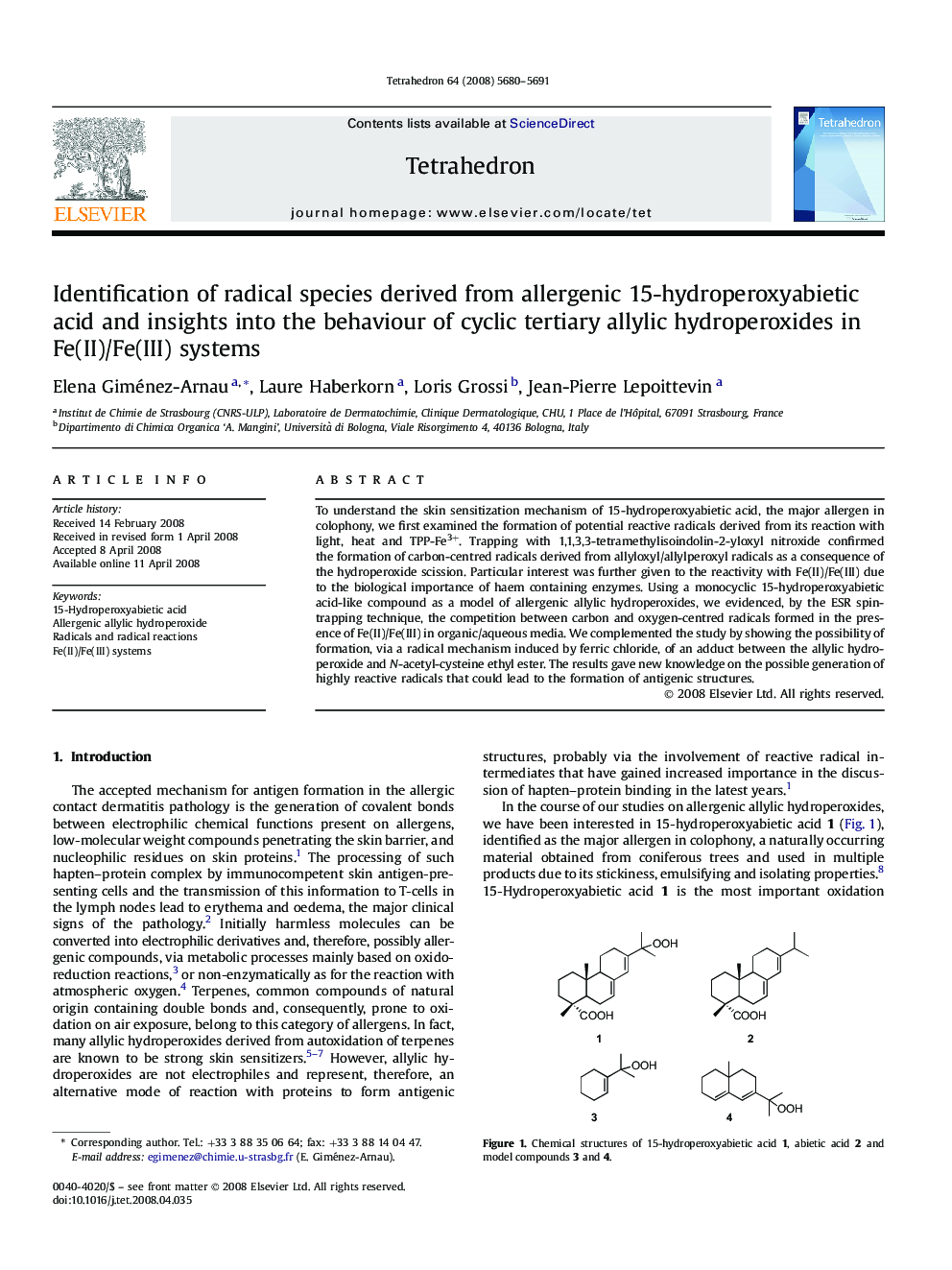| Article ID | Journal | Published Year | Pages | File Type |
|---|---|---|---|---|
| 5223920 | Tetrahedron | 2008 | 12 Pages |
To understand the skin sensitization mechanism of 15-hydroperoxyabietic acid, the major allergen in colophony, we first examined the formation of potential reactive radicals derived from its reaction with light, heat and TPP-Fe3+. Trapping with 1,1,3,3-tetramethylisoindolin-2-yloxyl nitroxide confirmed the formation of carbon-centred radicals derived from allyloxyl/allylperoxyl radicals as a consequence of the hydroperoxide scission. Particular interest was further given to the reactivity with Fe(II)/Fe(III) due to the biological importance of haem containing enzymes. Using a monocyclic 15-hydroperoxyabietic acid-like compound as a model of allergenic allylic hydroperoxides, we evidenced, by the ESR spin-trapping technique, the competition between carbon and oxygen-centred radicals formed in the presence of Fe(II)/Fe(III) in organic/aqueous media. We complemented the study by showing the possibility of formation, via a radical mechanism induced by ferric chloride, of an adduct between the allylic hydroperoxide and N-acetyl-cysteine ethyl ester. The results gave new knowledge on the possible generation of highly reactive radicals that could lead to the formation of antigenic structures.
Graphical abstractDownload full-size image
